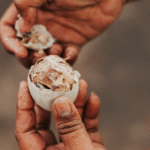Prague, Czechia – The culinary game in the Philippines is just like every other nation in the world. We have beloved comfort food, festive dishes, and yes, the exotic bites that test the adventurous spirit of visitors.
While some may raise their eyebrows, these bizarre delicacies are part of the Filipino culture and is often tied to tradition, resourcefulness, and regional pride. If you are brave enough, here are the Top 6 Exotic Filipino Foods you should try when you visit the country.
6th: Balut

Perhaps the most famous (or infamous) of them all, balut is a fertilized duck egg with a partially developed embryo, boiled and eaten from the shell. Usually enjoyed with a pinch of salt or a splash of vinegar, it’s considered a protein-rich street snack. Many locals even believe it’s an aphrodisiac.
5th: Isaw (Chicken/Pork Intestine)
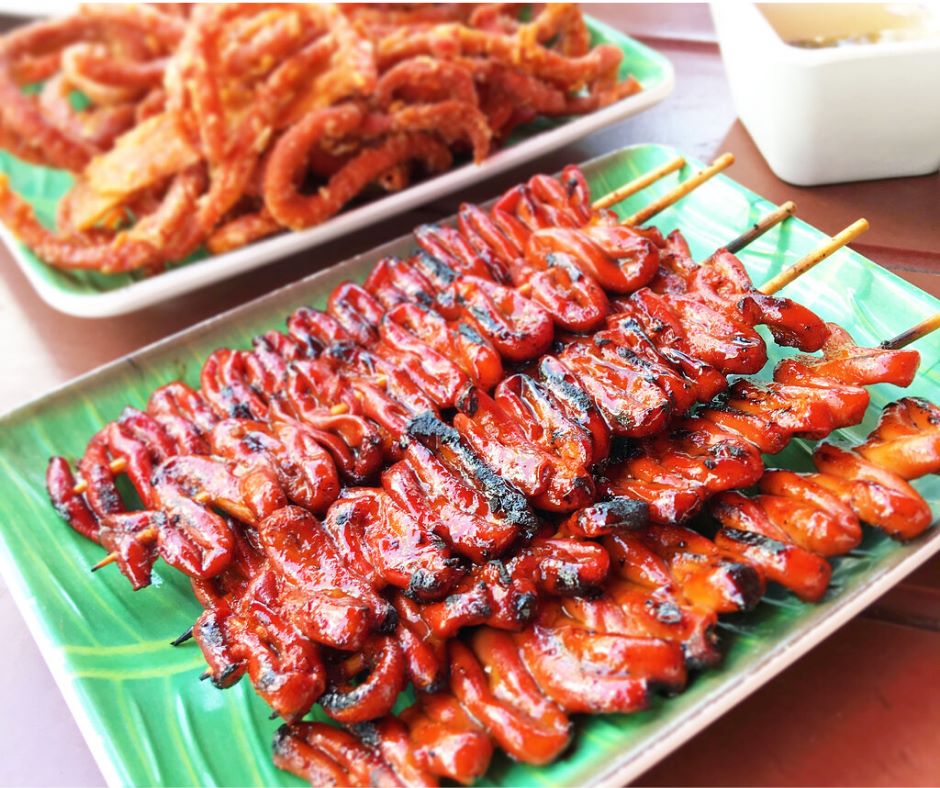
A true street food superstar, isaw is made from chicken or pork intestines, meticulously cleaned, boiled, and then grilled on skewers over hot charcoal. It’s smoky, slightly chewy, and usually dipped in a spicy vinegar sauce for that extra kick. You’ll often find long lines at isaw stalls in the late afternoon, with locals enjoying it as a quick snack or pulutan (bar chow).
4th: Adidas (Chicken Feet)
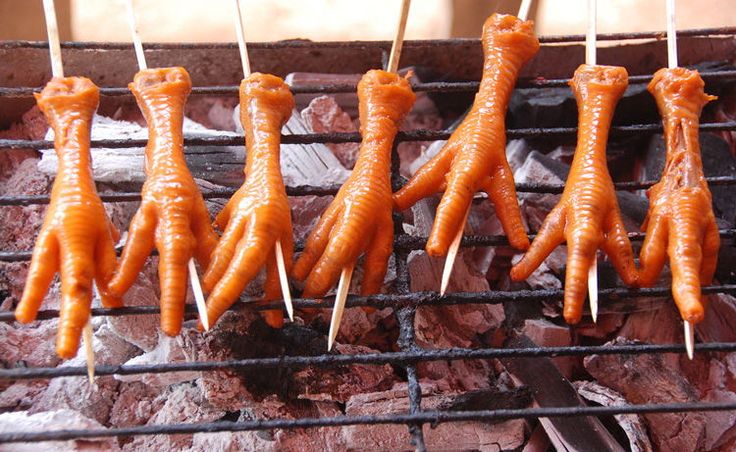
Adidas is a fun and chewy snack, marinated in a savory-sweet blend and grilled to perfection. Don’t be scared, it’s actually really good and one of the most beloved street foods for its flavor and unique texture. Pro Tip: You can also cook Adidas in the oven at 200°C for 20–25 minutes if grilling isn’t possible. Serve hot with chili vinegar.
Quick Recipe:
- Clean 500g chicken feet and trim the nails.
- Boil for 15–20 minutes until slightly tender.
- Marinate in soy sauce, garlic, brown sugar, and a little sesame oil for at least an hour.
- Skewer and grill until golden brown, turning occasionally.
- Optional: Brush with remaining marinade while grilling for extra flavor.
3rd: Soup #5
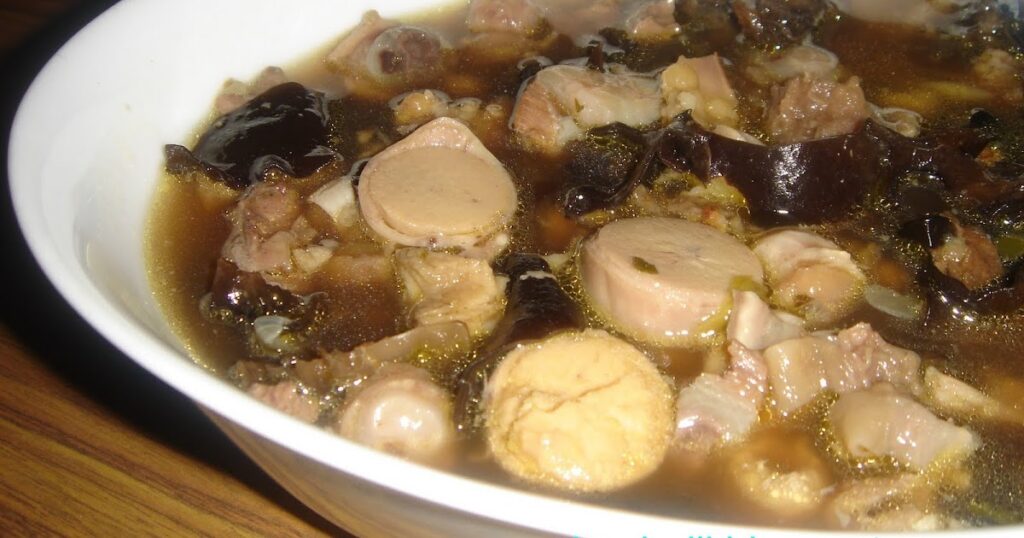
If you’re looking for a truly adventurous Filipino dish, Soup Number Five is legendary! This soup is made from a bull’s penis and testicles and is widely believed to have aphrodisiac and “strength-enhancing” properties. Some men swear that it boosts virility and stamina, earning it a curious place in local culinary lore.
LATEST READS FOR YOU:
- How to Protect Your Skin During the Cold Months: 5 Tips for Filipinos Living in the Czech Republic
- Going Home for the Holidays? We Gotchu, Your OFW Christmas Travel Checklist is Here!
- Not-So-Exotic, Totally Yummy 6 Filipino Dishes to Try
- The Philippines’ Tabo Culture
- AirAsia Expands Routes: Direct Flights from Manila to Istanbul via Kuala Lumpur Begin November 14
2nd: Dinuguan (Pork Blood Stew)
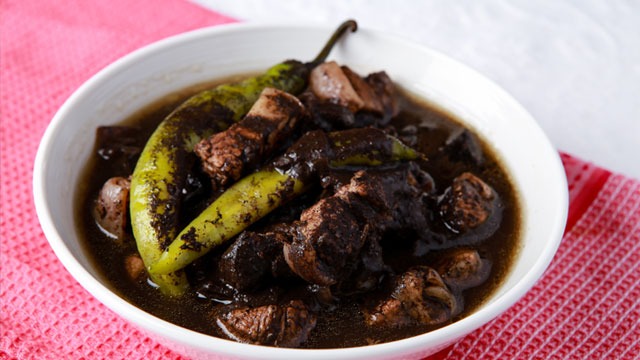
Ready to dive into something truly unique? Dinuguan is a savory pork blood stew that Filipinos love. Made from pork offal simmered in pig’s blood, vinegar, garlic, and spices, it’s rich, tangy, and deeply comforting. Most locals enjoy it with puto (steamed rice cakes) to balance the intense flavor. While it may sound intimidating at first, trying dinuguan is like getting a taste of Filipino tradition. It’s hearty, bold, and full of character.
1st: Betamax (Grilled Pork Blood )
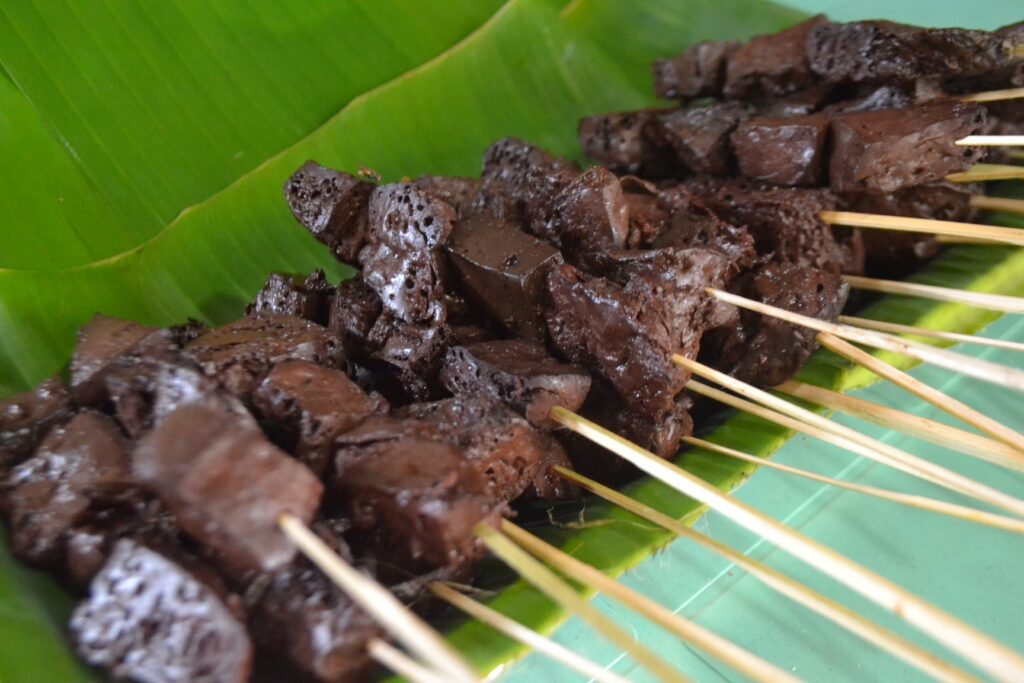
Continuing with the blood recipes, Betamax is a street food made from coagulated pork blood cut into small blocks, skewered, and grilled until slightly charred, it’s smoky, savory, and utterly addictive. The name comes from its rectangular shape, reminiscent of the old Betamax video tapes. Usually enjoyed with a dash of spicy vinegar, Betamax is a perfect snack while strolling through Filipino streets.
Food for thought
Did you notice a pattern? Many of the exotic Filipino dishes we’ve explored come from parts of pigs, chickens, and other animals that are often overlooked elsewhere. For Filipinos, there’s a saying: “Sayang!” meaning, “Don’t waste it, we can still make something delicious out of this.”
This resourcefulness comes from necessity, from a history of making the most out of limited ingredients.
Today, these dishes remain a testament to Filipino creativity and respect for food. These dishes show that when you have very little, you learn to appreciate even the simplest things and turn them into something rich, flavorful, and sustaining.
So, the real question is, are you ready to take a bite?








